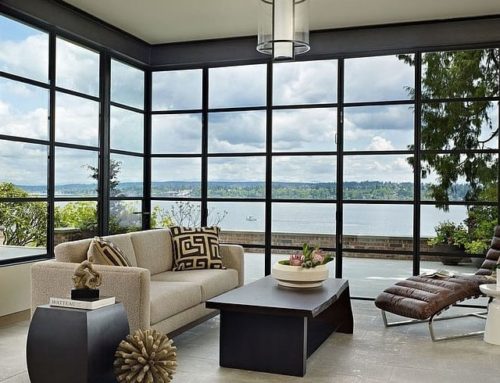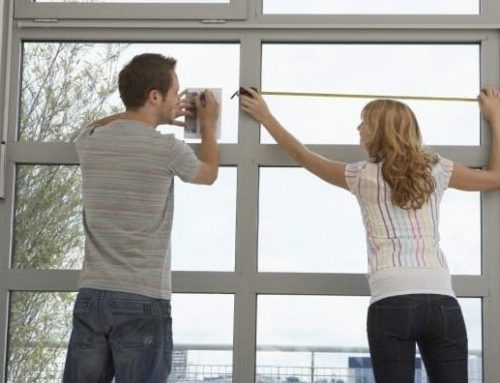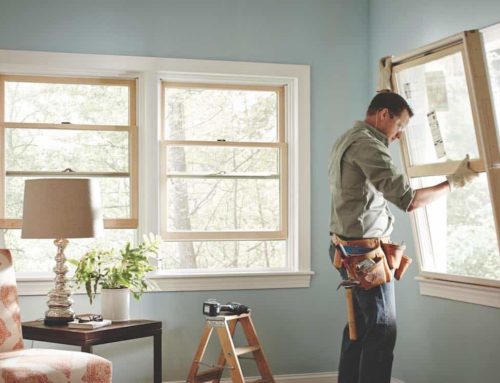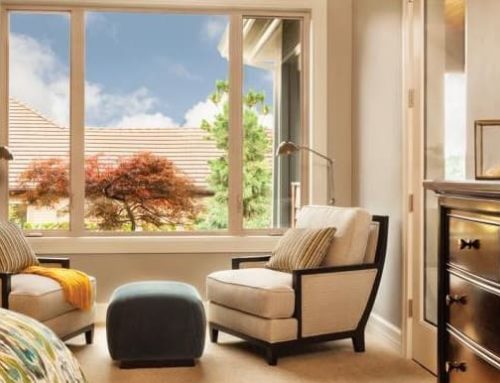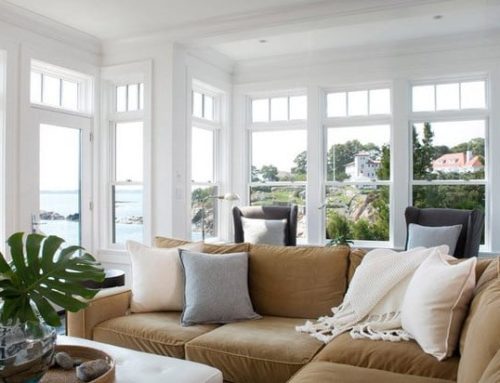Table of Contents
This article presents everything you should know about tinting windows. Windows change the work or living space dramatically. If a space has more windows, then it benefits more.
An office or home without windows is never an interesting place to work or live in. In Australia, around 40% of energy is spent on cooling and heating homes.
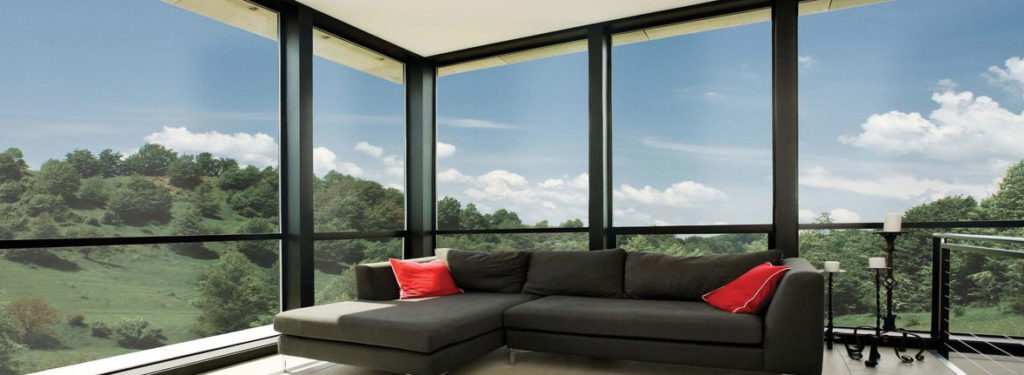
As people enjoy viewing the nature outside through their windows, whether at home or the office, the thought of reducing utility bills, blocking ultraviolet rays, reducing the damage caused by the sun within the office or home, hardly crosses their minds.
The basic concept behind windows is creating a harmonic and beautiful space that separate the outdoors and indoors. However, glass windows contribute to more than 30% of the overall heating costs within a home.
Although opening up a home or the office to the nature outside appears like a great and harmless idea, the consequences can be dire considering the harsh weather conditions in Australia.
Climate across Australia tends to be rather unpredictable. Since a human being cannot control weather, the best solution is coming up with energy efficient concepts that control the internal climate of a home to make it as comfortable as possible.
This is achieved by considering the environmental factors that affect the internal climate of a home, especially sunlight.
For instance, installing a window film over glass windows comes with the benefit of enhancing energy efficiency while still allowing you to enjoy viewing the nature outside.
This means you will get the very best of the exterior world and the interior space. Applying window films will also have environmental, protection, and financial benefits for your home in terms of value and for you too.
From the financial benefits that come from window tinting to the tinting options available, this article covers everything.
Window Tinting Defined and How It Works
A window tint is a film which is adhesive in nature and applied on glass windows to act as material that filters UV rays such that it prevents them from penetrating through glass.
Some tints are designed to insulate glass, thereby preventing heat loss from the home during winter and retaining cool air during summer. This improves the overall insulation of a home by 92%. This translates to lower costs of heating and cooling within a home.
Some window films are designed to block both ultraviolet A and B rays, and infra-red rays. This assists in saving on the costs of maintenance and protects household items (such as blinds, paint, carpet, and floor boards) from sunlight damage, thereby adding to their durability.
Although window tinting is rare in older homes, it is increasingly becoming a major consideration when renovating older houses and building new ones due to the energy efficiency that comes with them. Tints also assist in lowering the carbon footprint.
Sometimes back, applying tint on home windows was like a suicidal design option. In those days, the films were of low quality, thus they would not withstand harsh weather elements.
It would peel off making the entire tint rather useless. Traditional tints were mostly dye-based and were poor insulators. They would absorb heat, lose color, and distort the view through your windows. Hence, they were hardly energy efficient.
Modern films are made using acrylic adhesives that withstand extreme weather elements. Their composition also includes some metals such as titanium that functions as heat insulators and for strengthening glass.
They are thin and at the same time hard. Hence, they hardly bubble or peel when exposed to high temperatures. They don’t obscure view since they are hardly detectable, such that they make it possible to maintain the design of your home while still offering the advantage of blocking UV rays.
Thankfully, tints are now more reliable and energy efficient. They no longer create a bubbly, purple mess on windows like what is often seen on older cars.
Advanced technology has made it possible to develop strong, yet transparent films that can be fit on any windows. Modern tints blend easily with the style and aesthetics of a home while still offering multiple functions.
They suit all needs, whether it’s heat and glare reduction, safety and security films, frosted films for enhancing privacy, anti-graffiti films, and many other functions.
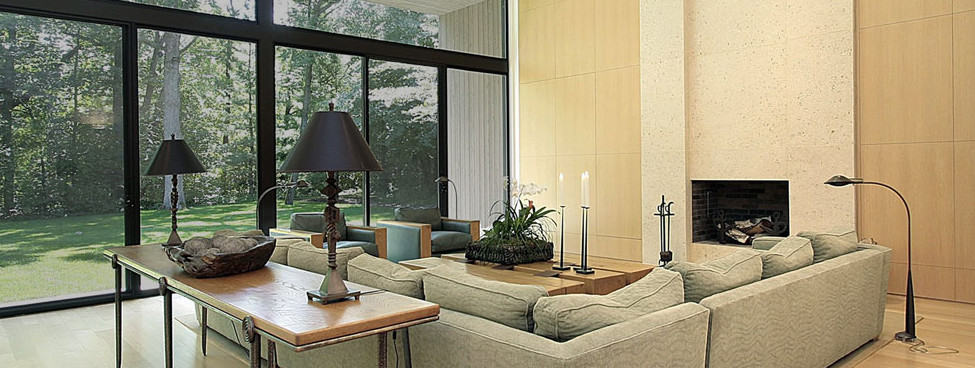
Tinting Options to Choose From
-
Frosted Film
These films offer privacy and at the same time allow light to penetrate. They can be computer cut or etched to offer extra design effects. Frosted films eliminate the need of installing blinds or curtains.
However, their main shortcoming is that you cannot see through them, whether from the inside or outside. Hence, they are more ideal for areas that require maximum privacy such as door sidelights, meeting rooms, and bathrooms.
-
Glare Reduction Tint
Tinting can also be used to protect the eyes against glare from television screens and computer monitors. This assists in reducing fatigue and eye stress. Some tints offer as high as 85% glare reduction.
They are ideal for use by people who spend a lot of time in front of computer monitors or those that have eye problems due to excessive brightness.
-
Decorative Tint
Some tints are designed to decorate windows. For instance, decorative tints are made using digital graphics to make dull offices more lively or for creating an identity in a retail outlet.
These tints are computer cut such that can come with logos, branding, and other graphics to be integrated in the film. Their graphical design can also be custom.
-
Anti Graffiti Film
These films can be installed on retail outlet windows or any other such glass surfaces like counters and mirrors of public toilets that are often painted by graffiti artists.
The main purpose of these films is acting as an effective barrier to protect the glass from paint, marking, and scratches.
-
Security and Safety Film
Some tints are made from polyester to make glass shatter proof. Such films are applied on existing glazing where security and safety are necessary.
This is especially done to keep intruders away and making float glass safe for children. These films are typically clear and block 99 percent of UV rays.
Hence, they are ideal for preventing soft furnishings from fading without obstructing view. These films can also be used where glare or heat reduction is required.
Financial Benefits that Come With Tinting
Most glass windows installed within homes increase the overall intensity of ultraviolet rays. They also radiate the heat that comes from sunlight.
Tinting glass insulates it, thereby reducing loss of heat from your home during winter. Tinting also assists in retaining cool air within the home and reflecting around 86% of sunlight during summer.
Hence, they assist in controlling the temperature within your home. They minimize the need for air conditioning and this translates to lower utility bills.
Findings reported by Canstar indicate that using home cooling appliances during summer costs around $108-$120 to cool an area measuring 60 square meters. When you translate these figures to cool the entire home, you would be talking of around $383 on just cooling.
Another key benefit that comes from tinting is protecting home furnishings and furniture from harmful sun rays. High quality tint reflect approximately 99 percent of UV rays.
This protects items such as the carpet, photos, wall paintings and art, and couches against premature aging and fading.
Replacing upholstery and curtains is quite expensive. Tinting comes in handy to improve their lifespan. The risk of developing skin cancer due to spending lots of time close to a window is also reduced by tinting.
Security tints also assist in protecting a home against intruders, especially thieves who smash windows to grab nearby valuables quickly.
A report issued by ABS indicates that in 2015, 225,700 Australian households experienced burglary in their homes, shed, and garage.
Hence, investing in security tinting can protect your valuables from theft while still giving you peace, knowing that your family is safer by having an extra layer of protection.
These tints prevent burglars from smashing the glass since they resist impact from heavy objects such as metal poles, baseball bats, bricks, and even punches.
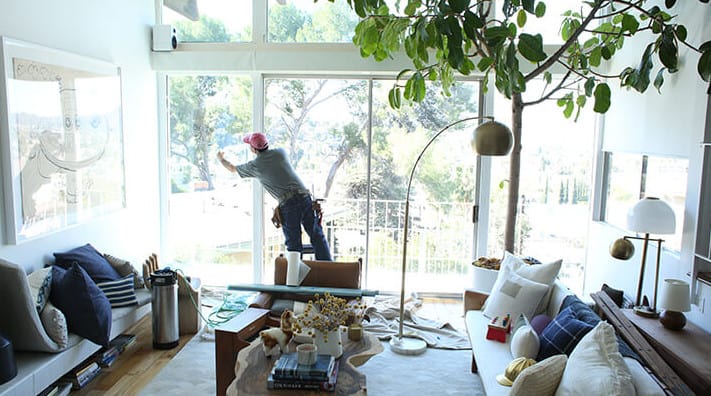
Community and Environmental Benefits of Tinting Windows
The construction industry is increasingly becoming more eco-aware. Technology and innovation are focusing more on minimizing the global carbon footprint while still improving sustainability.
Modern building trends like open plan multi-functional spaces, larger windows, and smaller houses are all aimed at offering environment-friendly designs.
All extensions and new homes across Australia should adhere to energy efficiency regulations in the Australian Building Code. The aim of these regulations is combating global warming.
High quality films have the ability of reducing heat transfer by 43 percent. They reflect heat off a glass window and divert it back into your home rather than losing it through the window.
This is especially important to retain heat inside your home during winter. You will use less of home heating appliances to keep your home warm during winter.
Similarly, these films offer the same function during summer, whereby they reflect heat from the sunlight to prevent it from penetrating through the windows.
The benefits that come along with tinting go beyond your home and office. They make a huge difference to the surrounding community.
Their benefits to the environment can be utilized by applying tint to trains, restaurants, schools, and anything else that has glass windows. These benefits should be fully utilized to minimize carbon footprint.
Tinting Window as a Protection Measure Against Shattering
In life, accidents are always certain to happen. Kids might break a window while playing or the lawnmower might through a rock on the window and shatter it.
Although it is not possible to predict when an accident will occur, the consequences can be prevented. For instance, tinting windows reduces the chances of glass from shattering completely.
The window film bonds with glass such that its strength is increased. This disperses vibrations after an impact, such that in case the glass shatters, the shards are kept together. This prevents shards from falling all over, thereby reducing chances of injury and making cleaning easier.
Using a security films adds strength such that the home is protected from intruders who are always seeking to break into a home via a sliding glass door or the window.
How Much Does It Cost to Tint a Window?
Most home owners recoup the money spent on tinting windows within a year from savings on longevity of furnishings or fixtures and utility bills.
However, the cost of applying tint depends on the number and size of windows. High quality glare and heat reduction films cost around $70 to $75 for every square meter while insulation films cost $160 to $180 for every square meter.
Sophisticated insulation films can be more costly as a result of the rigorous process involved in manufacturing them. They may cost around $190 for every square meter.
However, they contribute to more savings on cooling and heating costs. Hence, they will offer you more savings in the long term despite having a higher cost if installation.
It is important to note that applying films on irregularly shaped, arched, or dirty windows, installation from scaffolds or ladders, and working beyond a metropolitan area, can all contribute to extra cost of tinting.
It is advisable to clean the windows before applying the film. Nevertheless, a reliable tint seller and installer should be in a position to offer you a free quote.
Installing the Tint
Applying the film is usually done on the interior surface of glass. Soapy water is used when applying the film. Installation can be completed within a day.
This depends on the size and number of windows. If you are a DIY handy person, then you can use this guide to apply the film on your own.
However, you can hire a professional tint installer to ensure that the product will offer you its optimum performance.
A Step By Step Process of Installing a Tint Film
Simply follow these steps to install tint:
- Start with measuring the size of your window. Then cut the film to size.
- Put some soapy water in a spray bottle and spray your window.
- Use a razor to scrape the window edges so as to remove paint, gunk, and glue from the pane.
- Spray it again with the soapy water. Then remove any remaining dirt from the glass using a use an appropriate glass scourer.
- Clean the soapy water from the glass surface using a squeegee. Wipe the squeegee when removing the soapy water.
- Spray the glass with soapy water once again. Repeat the squeegee cleaning process to ensure no more dirt or soapy water is left behind.
- Use a small squeegee to clean all the window corners. This will also remove water that may have been left around the seal.
- Once again, spray the pane with the soapy water solution.
- Take the tint and peel off the liner to reveal an adhesive. Peel the liner off just like you would peel the paper used on an adhesive contact. Avoid touching the adhesive. It is advisable to get some help when peeling the liner to avoid touching the adhesive and wasting some of the film.
- Once you are done peeling, line the film on the glass pane. Then press it onto the glass surface.
- Use soapy water to spray the film.
- Take a razor blade and trim any excess film around the glass edges.
- Take a squeegee once again and push it over the film to remove any bubbles and water from the film. This should be done meticulously since any bubbles left behind will remain there once the tint dries.
- After using the squeegee, take a hard piece of card and push the tint into the glass edges. Wipe any excess water from the card and push the film all over again until all the edges are properly stuck on the glass edges.
- Wipe the window using a microfiber cloth. Avoid pressing the window too hard as this may scratch the film. Allow the tint to settle for eight hours or more.
Maintaining Tinted Windows
A window tint lasts for 10-15 years on average. This depends on maintenance and the climate. Most tint brands come with a 10 year warranty.
However, some maintenance is required to extend their lifespan. Here are the dos and don’ts on maintaining tinted glass windows.
The Do’s:
Always use distilled water and a gentle soap solution when cleaning a tint film. Distilled water assists in preventing build up of chemicals and minerals on the tint and is milder than tap water.A good alternative would be using water and vinegar solution or a non-abrasive glass cleaning product.
Always wipe a tinted window using a microfiber cloth, a rubber squeegee, or a soft sponge to avoid scratching the film even it is scratch resistant.
The Don’ts:
Avoid using rough materials, harsh chemicals, and abrasive scourers to clean your tinted windows.
Chemicals and abrasive cleaners such as baking soda and steel wool should never be used regardless of the kind of dirt you are trying to remove.
Myths on Tinting Windows
There are some rather comical concerns that exist among some people about window tinting. Hence, it is important to debunk the most popular concerns and myths on window tinting.
-
“I heard tinting is rather cheap since it is designed for old homes and offices. How true is this?”
Window films can be used on any home, whether traditional or modern. Tinting is not specific to just old homes or offices.
Actually, windows on most old buildings are hardly tinted. Most windows that are tinted are those on modern buildings or renovated houses.
Tinting homes is a relatively new concept and the technology behind tinting has been improving. Tints now offer multiple functions to both traditional and modern homes.
They cannot be categorized as cheap. Tinting is a worthy investment that offers home owners with multiple benefits for many years.
-
“Will tinting kill indoor plants?”
Most indoor plants thrive well without direct sunlight. Some indoor plants might even grow healthier once the windows are tinted while others might not show any effect whatsoever.
Generally, some plants would experience some minor effects as they try to adjust the change upon tinting. This is because brightness levels will be altered from what the plants are used to. Hence, you may see effects such as delayed flowering or growth. However, tinting cannot kill them the plants.
-
“Will tinting make the home dark?”
The traditional types of tinting would show some impact on brightness levels within a home. However, advances in tint manufacture ensure tints do not impact on visible lighting.
Modern tints only focus on blocking light wavelengths like infrared rays. Hence, they are functional while still allowing light to enter your home. You will not have to add artificial lights during the day since tinting will not make your home any dark.
-
“I have heard that tinting makes windows look super-reflective and too shiny”
Traditional tinting options would often make a window appear super-reflective and too shiny. This is probably what you saw, especially if the tints were installed close to some styled lighting systems.
However, this is no longer the case, thanks to the ever advancing tinting technology. Modern tints eliminate the reflective aspect and shiny appearance. Some tints are hardly noticeable such that you would think it is a type of glazing.
Conclusion
Deciding to tint the windows of your home or office may seem expensive and complicated, but it comes with many gains. Window tinting will save you money in terms of reduced energy costs.
Moreover, it is a green solution that assists in reducing carbon footprint. There are also many tinting options to choose from such that you can always find a tint option that will suit your needs.
You can also consult a tinting professional to assist you in choosing an ideal tinting option.
Resources
Australian Building Codes Board

